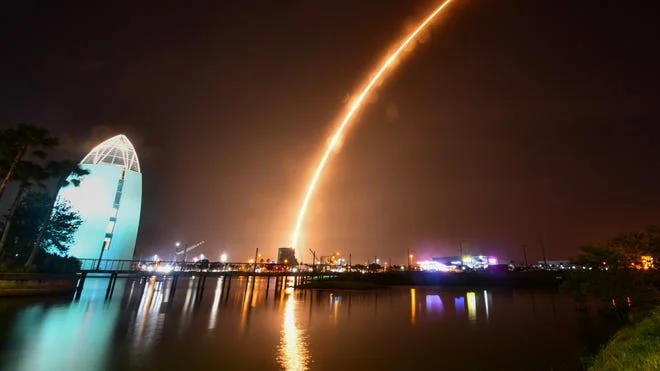
SpaceX Aims for the Stars: Increased Launch Cadence Faces Environmental Scrutiny as FAA Approves More Starship Flights
SpaceX's ambitious plans to significantly ramp up its launch cadence at Cape Canaveral and Starbase, Texas are facing increased scrutiny from environmental groups and regulatory bodies alike. While the FAA has granted approval for a higher frequency of Starship launches from Boca Chica, concerns linger about the potential environmental impact of these operations.
The core issue revolves around SpaceX's proposal to dramatically increase Falcon rocket launches from Cape Canaveral Space Force Station – from 50 to a staggering 120 per year. This proposal has drawn criticism from the Air Line Pilots Association, environmental organizations, and fishing entities, all citing concerns about potential disruptions to airspace safety, wildlife, and marine ecosystems.

The Indian River Lagoon Roundtable, for example, points out that such a high launch rate – potentially one every three days from Launch Complex 40 alone – could severely disrupt wildlife reproduction, feeding, and nesting patterns. The Air Line Pilots Association also expressed apprehension about the safety of airspace, citing a past incident where a SpaceX Starship launched from Texas exploded, causing flight delays across Florida airports. Their letter to the FAA urged a comprehensive airspace-safety assessment.
The FAA's draft environmental assessment, while stating that the increased launch activity would not result in significant environmental harm, is currently under public review. The public has until May 15 to submit their comments. Perspectives vary widely, from the South Atlantic Fishery Management Council, which fears long-term pollutant accumulation affecting marine life, to Audubon Florida, which acknowledges the mitigated impact of using existing launch sites but worries about decreased opportunities for prescribed fire management.
Simultaneously, the FAA has approved SpaceX's request to increase the annual rate of Starship launches from its Starbase facility in Boca Chica, Texas, from five to 25. This decision followed an environmental assessment that included public meetings and a review of over 12,000 public comments. While this decision comes with an extensive list of conditions, including wastewater discharge regulations, it marks a significant step forward for SpaceX's ambitious Mars program.

Despite the green light, concerns persist. David Dixon, a property owner near Starbase, expressed worries about the potential structural damage caused by vibrations from the launches. It's clear that balancing the ambitions of space exploration with the need for environmental protection remains a complex challenge.
The situation is further complicated by SpaceX's ongoing expansion plans, including the construction of a massive Gigabay processing facility at Kennedy Space Center. United Launch Alliance (ULA) has urged the FAA and Air Force to consider the cumulative impact of all proposed launches, fearing that siloed analyses could underestimate the potential risks.
As SpaceX aggressively pursues its goal of reaching Mars, the need for careful environmental oversight and transparent communication with the public becomes increasingly vital. The coming months will be crucial as the FAA considers public feedback on the proposed Cape Canaveral launch increase and continues to monitor SpaceX's activities in Texas.
What are your thoughts on the balance between space exploration and environmental protection? Share your opinions in the comments below.